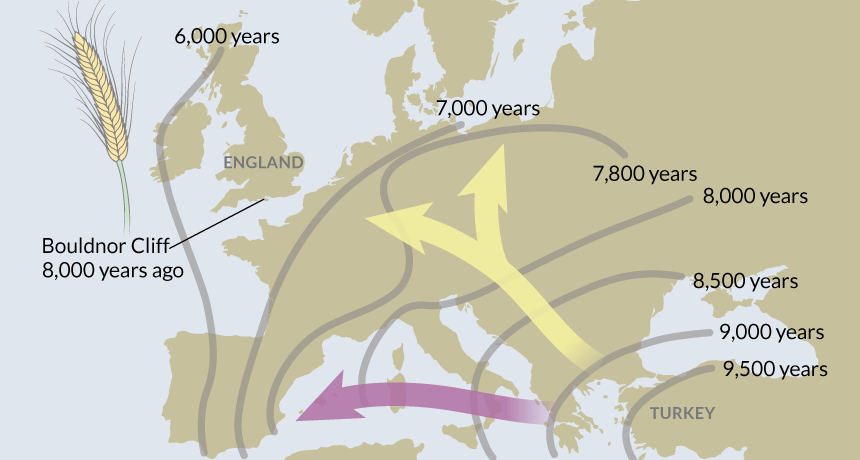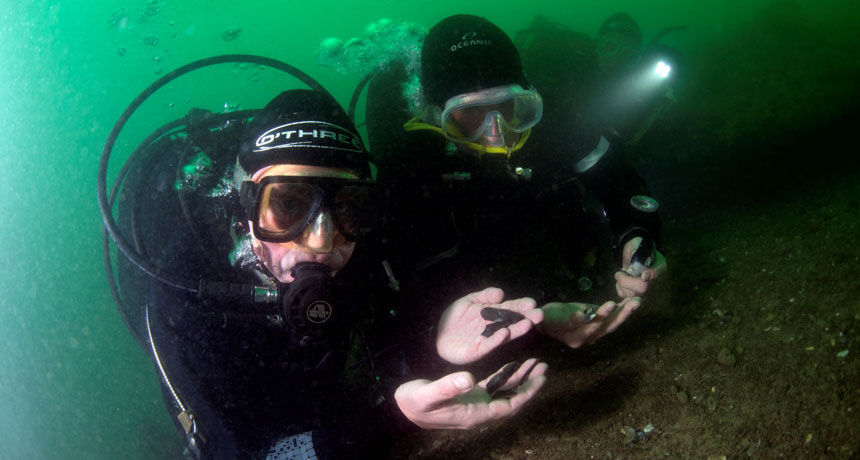Wheat reached England before farming
Hunter-gatherers may have traded for agricultural products 8,000 years ago

GRAIN TRAIN Agriculture spread from what’s now Turkey along southern (purple arrow) and northern routes (yellow arrows) into Europe. DNA recovered from soil at the underwater site of Bouldnor Cliff indicates that wheat reached England at least 2,000 years before it was first grown there.
Larson/Science 2015








